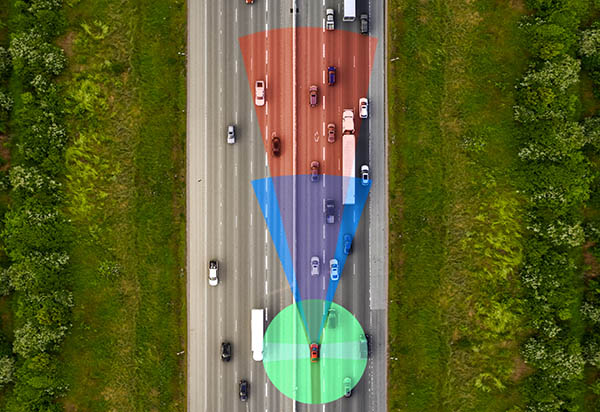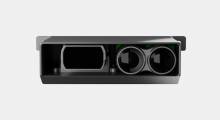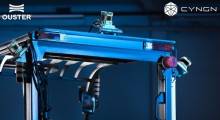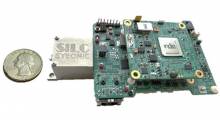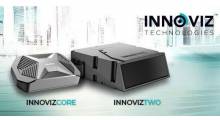Sense Photonics this week announced lidar sensors that it said will help enable manufacturing and adoption of autonomous vehicles. The company also announced a development program with an unnamed, Detroit-based automotive OEM.
“As our focus shifts from technology development to commercialization and production, this development agreement is a clear sign that Sense’s flexible architecture and world-class performance are the right solution for mass-market automotive OEMs,” stated Shauna McIntyre, CEO of Sense Photonics. “I am extremely proud of our team’s ability to bring Sense’s flash Lidar technology to market so quickly, as we moved from concept to automotive prototype in record time.”
Founded in 2016, Sense Photonics said its core flash technology has nearly current and pending 300 patents and is a high-performance, solid-state system with no moving parts. The company said that it is backed by leading venture capital firms and strategic investors and that it has developed partnerships with leading automotive and robotics customers.
Sense delivers rich point clouds
Sense described its system as “the world’s first flexible, scalable, high-performance automotive lidar platform to enable widespread ADAS [advanced driver-assistance system] and AV [autonomous vehicle] system adoption for any vehicle.”
The lidar platform includes the patented and proprietary vertical cavity surface-emitting laser (VCSEL) emitter and single-photon avalanche diode (SPAD) receiver technologies. These enable it to deliver the richest data point clouds at the highest points per second (PPS) of any automotive lidar system, claimed the company.
Sense said its camera-like design illuminates an entire scene and uses global shutter acquisition to capture all data points in a frame within the field of view simultaneously. This allows vehicles and other objects to be imaged without any motion distortion or data gaps, it said.
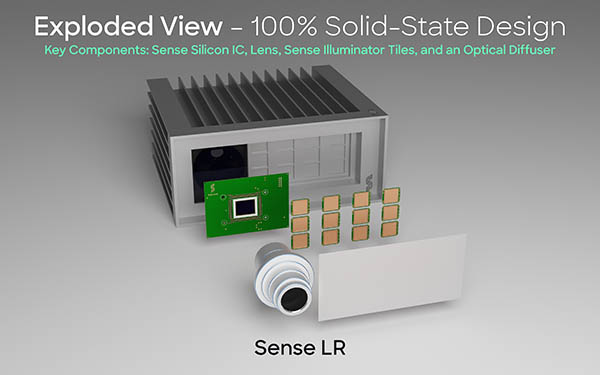
The platform can provide more than 10 million PPS for 3D vision, compared with 2 million PPS found in legacy scanning lidar systems, said Sense Photonics. This increase in 3D data density can provide ADAS and AV systems with the information density to classify and act on data three to five times faster than other systems, it added.
“From a safety standpoint, motion blur and reaction time are critical issues when a vehicle is traveling at highway speeds,” said Scott Burroughs, co-founder and chief innovation officer at Sense Photonics. “An autonomous system requires precise depth data in real time to be aware of the vehicle’s surroundings, particularly in dynamic environments. Data gaps found in legacy scanning systems increase the likelihood to miss small objects, parking lot gates, or even road debris.”
“Only a true solid-state flash lidar can provide uniform high-resolution information across the entire field-of-view without motion blur or data gaps — which is exactly what we’ve developed,” he said.
Optics change could cut automaker costs
Sense Photonics said the versatile design of the Sense Platform can significantly simplify and reduce costs for automotive manufacturers.
“With a simple change in optics, the same platform that delivers long-range, forward-facing data can be used to create a wider field of view for short- or mid-range sensors, providing a full 3D view of a vehicle’s environment,” it said. “This flexibility allows Sense to quickly tailor solutions for any automotive customer’s unique needs with significantly less development and validation time.”
“As we set out to design this platform, our team realized that mass adoption of lidar will only be realized at price points considerably less than today’s lidar systems,” said McIntyre. “We built a scalable platform using our 100% solid-state SPAD and VCSEL components, similar to the lidar found in the latest Apple iPhone. These proven components deliver not just scalability and cost-efficiency, but [also] the durability and reliability needed for automotive production.”
In addition, Sense said its solid-state design provides the modularity and flexibility to adapt to various form factors, allowing automakers to more easily integrate the sensors into their designs. The company said its emitter and receiver are in a unibody design but do not need to be co-located, and they are small enough to be installed inside headlamps or behind the windshield.
“Bulky, bolt-on sensors will never be a part of Sense’s product offerings,” said McIntyre. “We want to make sure our customers’ vehicles stay true to the designs their customers know and love.”
In addition to today’s announcement, Sense is also in final discussions on programs with a number of other major North American and European OEMs and AV providers, as well as leading global Tier 1 automotive suppliers.
Article topics
Email Sign Up

